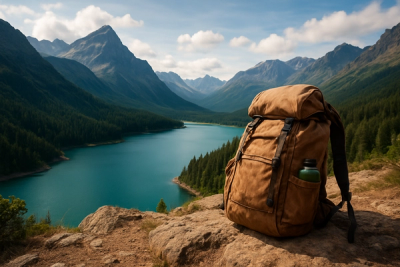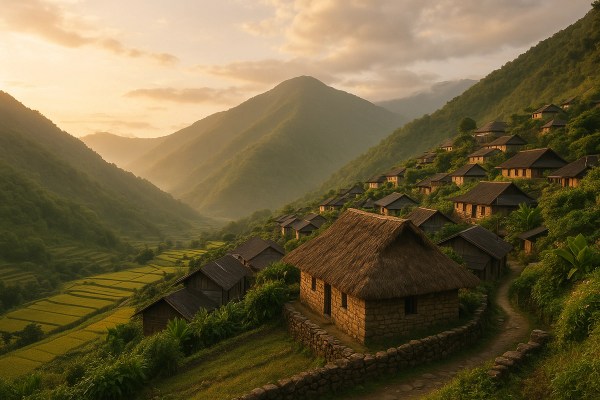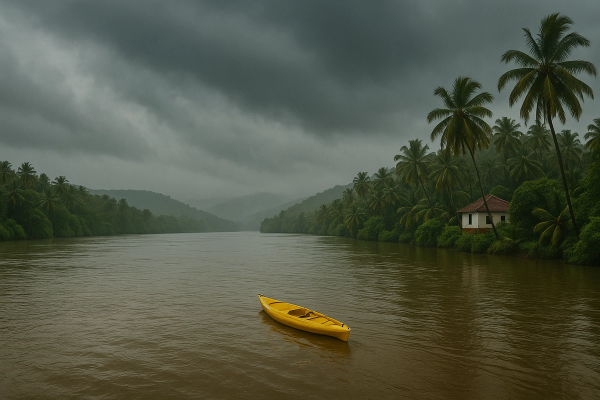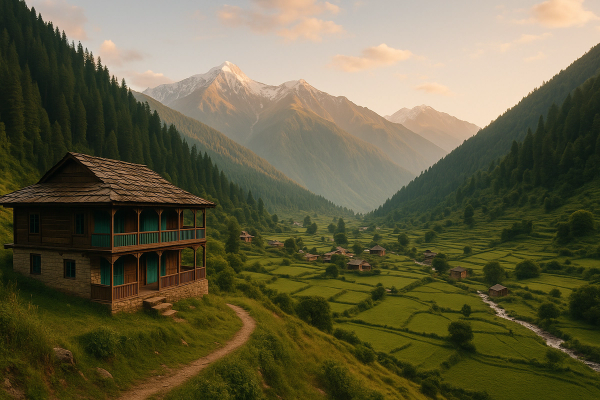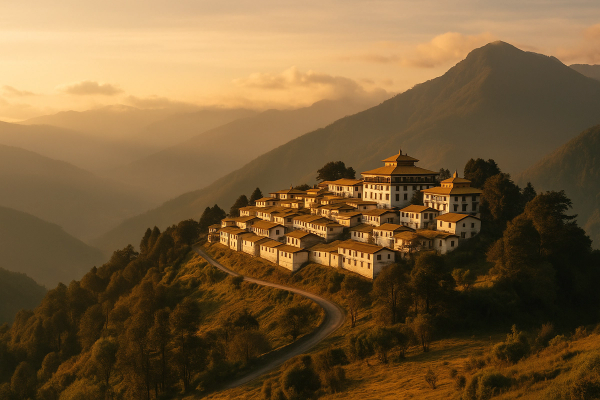Unknown Islands to Visit in 2025 (Global Edition) — the tiny places I can't stop thinking about#
So, um, I kinda fell down a rabbit hole the last couple years. I got tired of the usual island lists (you know the ones), and started chasing the weird ones, the places that your cousin hasn’t heard of and your airline app struggles to even spell. 2025 feels different in travel — more people are looking for quiet, community-led, sustainable trips, and honestly I’m here for it. Prices have creeped up, taxes popped up in a bunch of spots, and visa stuff has shifted too (the new ETIAS in Europe is finally rolling out this year), but the magic’s still there if you go a little sideways off the map. These are the islands I actually went to, slept on, got mildly lost on, and still daydream about while doing my laundry.¶
Socotra, Yemen — otherworldly and weirdly gentle#
Socotra looked like Dr. Seuss doodled it after three coffees. The dragon blood trees aren’t hype, they’re real and they’re freaking odd and perfect, like green UFOs perched on cliffs. I camped on a beach with phosphorescent waves and a full moon so bright we didn’t even need headlamps, just goats and stars and silence. Practical stuff: 2025 travel is usually on guided, all-inclusive trips because Yemen visas and permits are handled by operators, and you fly on seasonal charters via Abu Dhabi or in/out through mainland Yemen (check advisories constantly — like, every week). Socotra itself has stayed relatively calm compared to the mainland conflict, but it’s still a place where you respect the rules, go with established guides, and don’t travel independently. Budget-wise, don’t expect cheap: weeklong packages run roughly $1,800–$2,800 per person, simple camps and meals included, and Wi‑Fi is basically a rumor. I brought cash, a filter bottle, and left a light footprint… which the island deserves.¶
Ogasawara (Bonin Islands), Japan — 24 hours by boat, zero airports#
Getting there is this old-school adventure: you hop on the Ogasawara Maru ferry from Tokyo’s Takeshiba Terminal for a 24-hour ride, the kind of trip where you slurp ramen, watch flying fish, then crash in a bunk and wake up to a volcanic skyline. 2025 schedules still bounce between once or twice weekly, and sell out months ahead in peak season (Jan–Apr is whale watching, summer is dreamy water). There’s no airport here on purpose, which keeps the vibe slow and protected. I rented an e-bike, snorkeled in ridiculous visibility, and got lectured (nicely) by locals about reef etiquette. Lodging is small-scale: family inns and guesthouses, usually ¥6,000–15,000 per night, cash-friendly, and you book early or you don’t go. Visa-wise, most travelers who were visa‑free for Japan pre‑2020 are back to that now, some nationalities use the e‑Visa — check the MOFA site before you buy the ferry, seriously.¶
Flores & Corvo, Azores (Portugal) — waterfalls and a crater that felt private#
Everyone screams about São Miguel and Pico (rightly), but Flores and tiny Corvo felt like the shy kids in class who turn out hilarious. On Flores, I hiked into Poço da Ribeira do Ferreiro — this windshield of green dripping waterfalls — and sat there alone until a cow wandered up like, hey buddy. Corvo is a single village, a caldera, a handful of cats. Ferry schedules in 2025 are… moody, because weather is boss. I got wind‑canceled twice and didn’t even mind. For Europe entry this year: ETIAS pre‑travel authorization is finally launching, so if you’re visa‑exempt for Schengen you’ll need to do that online before you go (sevenish euros, valid for multiple trips). Driving in Flores is kind of a must — rentals ran around €65–90/day in high season — and stays were €70–140 a night for guesthouses or small eco lodges. It’s safe, but brings rain gear, a plan B, and patience. The island pays you back with silence.¶
Príncipe, São Tomé and Príncipe — chocolate forests and empty beaches#
I flew in from São Tomé on a tiny plane and walked into a honeyed, green world where cacao trees leaned over old plantation roads and the ocean just… breathed. Príncipe has gone big on biosphere protection and low-density eco tourism, which you feel everywhere — reef rules, no plastic fuss, and your lodge probably funds turtle patrols. In 2025 the paperwork is easier: many travelers use STP’s e‑Visa system, approvals usually quick, and some nationalities have visa‑free stays for short trips (double-check for your passport, it varies). It’s not budget travel unless you go very simple: guesthouses around $40–80 per night, and those dreamy eco lodges are more like $250–700+. I splurged once and it hurt and also didn’t. Health stuff: it’s tropical, so malaria is a thing — I took prophylaxis, used repellent, and wore long sleeves at dusk. No regrets, just a lot of sunrise swims with no one else around.¶
Lanyu (Orchid Island), Taiwan — scooters, flying fish, and respect first#
Lanyu knocked me sideways. I ferried from Taitung on a day with glassy water; two days later a squall rolled in and half the island disappeared behind mist. That’s the rhythm here. The Tao people have deep, living traditions around flying fish season, boat building, and taboos that aren’t tourist decoration. In 2025, Taiwan entry for many passports is visa‑free again, and arrivals use that e‑arrival card. On the island: scooters are kinda the way — I paid around NT$500–800/day — and rooms went NT$1,200–2,800 for simple B&Bs. Ferries and those tiny domestic flights cancel often for weather, so you don’t book tight connections unless you enjoy chaos. Biggest tip from a local auntie who fed me seaweed soup: don’t drone near villages, don’t poke sea turtles, and don’t act like the island is a selfie studio. It isn’t.¶
Haida Gwaii, Canada — cedar, fog, and the feeling of being a guest#
I drove off the BC ferry at Skidegate into a wall of mist that smelled like cedar and ocean. Haida Gwaii felt like a place with its own pulse, where you always remember you’re on Haida land first. I camped two nights (the damp gear never fully dried, classic), then took a guided trip down into Gwaii Haanas, where old poles still stand at SGang Gwaay and sea lions clap the water like noisy toddlers. 2025-wise, you still need to reserve with Parks Canada for Gwaii Haanas, and some sites require licensed guides — check early because popular weeks fill. If you fly, Sandspit and Masset have limited seats; ferries are cheaper but weather can nudge schedules. Stays ranged from $120–250 for small inns or cabins; rental cars were… pricey, like $100–125/day, and book fast in summer. For entry, Canada keeps the eTA system for visa‑exempt folks, and visas for others — just don’t wing it last minute. Wildfire seasons have been unpredictable the last few years, so watch advisories and be flexible. Being a good guest here matters — ask before you photograph, support local artists, leave places cleaner than you found them.¶
What changed for travel in 2025 (and kinda how I deal)#
Truth is, a bunch of small things shifted and they add up. Prices jumped, especially on remote routes. Governments tweaked systems to manage crowds and protect nature. I learned to book earlier, travel shoulder season, and carry more patience than snacks (and I carry a lot of snacks). Here’s the snapshot I wish I had taped to my backpack — not perfect, but real:¶
- Europe’s ETIAS is rolling out in 2025 for visa‑exempt travelers to Schengen — it’s a quick online pre‑authorization, low fee, valid for multiple trips. If you’re hopping to the Azores, do it before the airport.
- More islands now have conservation fees or visitor taxes to fund protection — think of it like a ‘reef tip’. I paid them happily on Príncipe and Ogasawara, and Bali added its own tourism tax last year too if you’re routing through Indonesia elsewhere.
- Availability is tighter in peak seasons. Remote ferries and tiny planes sell out faster. I book lodging 2–3 months ahead now, and rental cars even earlier on islands with like three agencies.
- Connectivity is better but still fragile. eSIMs work in Japan, Portugal, Taiwan, Canada, but speeds drop on smaller islands. I download offline maps and carry an old-school paper map because I don’t wanna not find my tent again.
- Safety is mostly about weather and respect. Storms in the Azores and Taiwan still cancel ferries. Socotra needs guided travel and up-to-date advisories. Haida Gwaii asks you to be a good guest — read community guidelines and follow them. Travel insurance felt boring until it saved me three times this year.
The best islands in 2025 aren’t just ‘hidden’. They’re places that make you slow down, ask, listen, and pay back the beauty you’re borrowing.
If you’ve got questions or want me to share my sloppy packing list, ping me. And if you’re digging travel stories like this, I keep finding solid trip ideas and weird little gems on AllBlogs.in — worth a scroll when your coffee’s getting cold.¶


